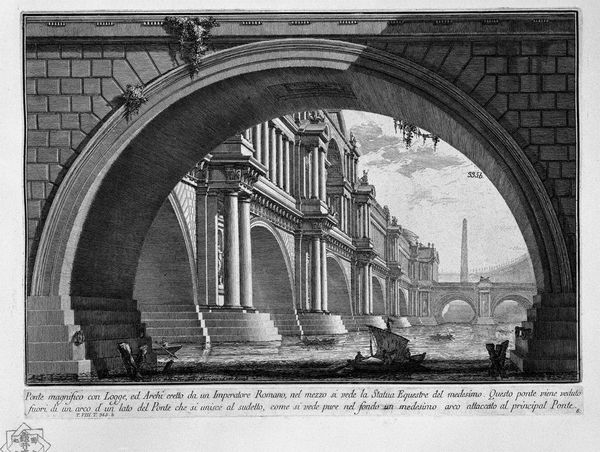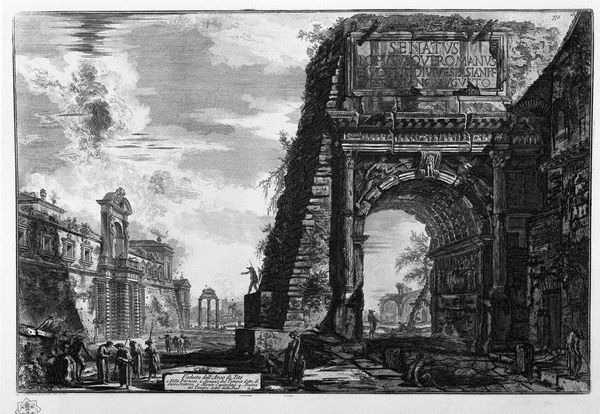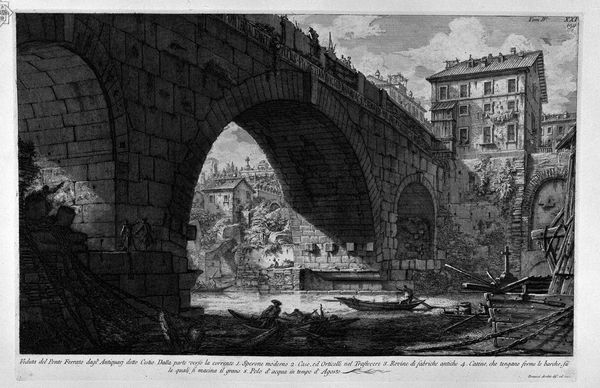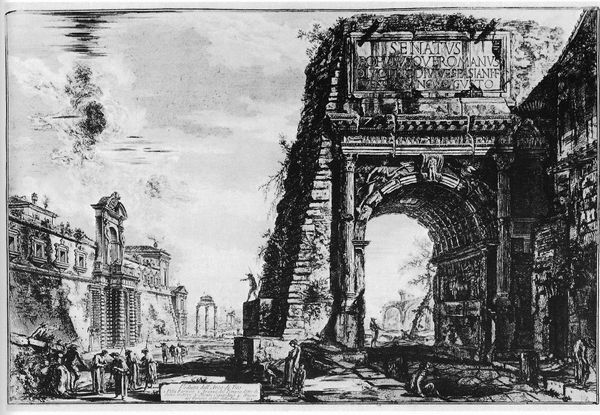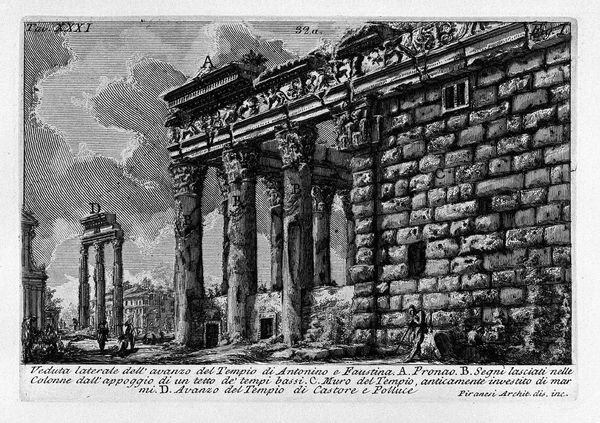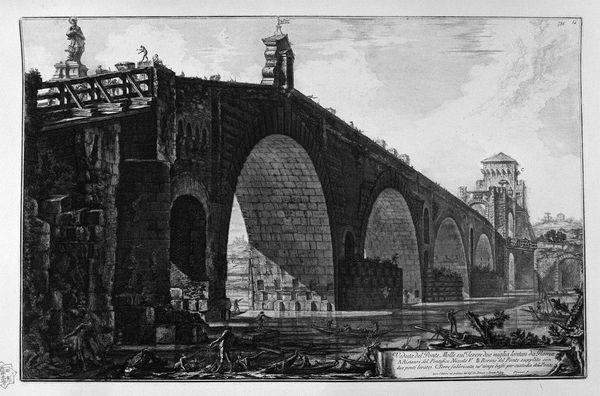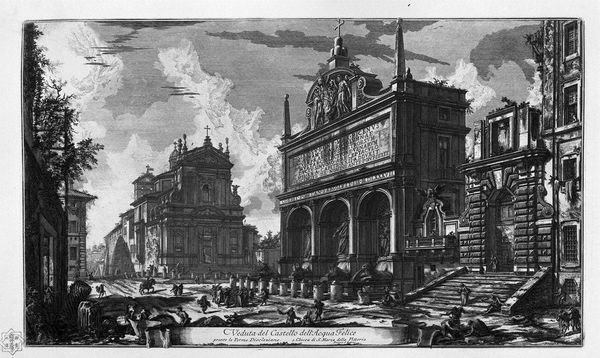
print, etching, architecture
#
neoclacissism
# print
#
etching
#
landscape
#
ancient-mediterranean
#
arch
#
line
#
cityscape
#
architecture
#
realism
Copyright: Public domain
Curator: Today we’re looking at Giovanni Battista Piranesi's etching, "The Roman antiquities, t. 1, Plate XXVI. Arch of Gallienus," created in 1756. It's part of a larger series documenting Roman architecture and antiquities. Editor: My immediate impression is one of grandeur tempered by decay. The stark black and white emphasizes the crumbling stone and the contrast with the almost frantic energy in the sky. Curator: Piranesi's work during this period served as a vital visual record. Rome, although still holding immense historical weight, wasn't quite the bustling modern city yet. These prints played a significant role in shaping how people across Europe viewed it. We see this resurgence of neoclassicism shaping political identities tied to perceptions of glory and legitimacy, or even access to resources or privilege through art. Editor: That's a key point, about "shaping how people viewed it." Piranesi isn’t just documenting; he's framing a narrative. Consider the figures included, they’re dwarfed by the scale of the architecture and appear more like embellishments within this imposing scene. Curator: Exactly. The arch isn't just a structure; it becomes a symbol of power and endurance, an icon set against the daily lives unfolding around it. Its role then reflects something back to today. How are we understanding what Piranesi intended to show in relation to what is left behind? Who has access to interpreting, and engaging with that past? Editor: What intrigues me, too, is the artistic license. The level of detail in the arch itself compared to the sketchier treatment of the surrounding landscape suggests a prioritization. This isn’t just objective documentation. The Arch of Gallienus isn’t merely displayed but staged. Curator: Precisely. And thinking about who had the power to own and circulate prints like this - its patronage - opens avenues to analyze the role this plays for people's understanding of art as an authoritative historical source. We're talking about constructed perspectives, really. Editor: Definitely. The print offers us insight not only into Roman architecture but also into the 18th-century European fascination with, and re-interpretation of, classical antiquity. Curator: It really asks important questions of art's impact, both then and now, highlighting connections across socio-historical events and periods to art's creation, purpose and relevance. Editor: It leaves one wondering, what grand ruins will *we* leave behind, and how will they be interpreted centuries from now?
Comments
No comments
Be the first to comment and join the conversation on the ultimate creative platform.
